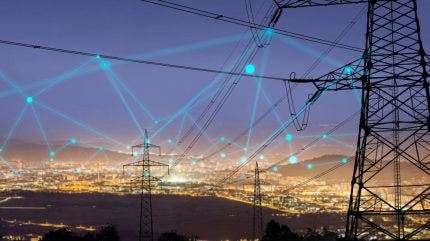
According to GlobalData, the global cloud computing industry is anticipated to reach $1.2 trillion by 2026. For the power sector, the growth in cloud services (through the likes of infrastructure as a service (IaaS), platform as a service (PaaS), and software as a service (SaaS)) signals a range of opportunities to support the industry’s energy transition.
However, as the power sector grows smarter, a raft of new challenges and pain points emerge. These include inadequate line loss management, electricity theft, poor online monitoring and data analysis, low power supply reliability, long outage times, and high frequency of faults as well as difficulty in locating them. These hurdles run the risk of increased transmission loss, poor workflows, and cost inefficiencies. In the UK alone, transmission losses amounted to around 25 terawatt-hours, or approximately eight percent of the electricity supplied in 2022.
According to David Sun, Vice President of Huawei and CEO of Electric Power Digitalisation BU: “The new power system is faced with five main challenges: the green structure on the power generation side, the electrification and interaction on the load side, flexible power grid regulation, management and interaction across the power source-grid-load-storage system, and the need to build an effective market mechanism and a complex electricity-carbon trading system.
“The digital transformation of power enterprises is well underway; and as digitalisation deepens, mindsets and interests are being reshaped. Technologies and scenarios are seeing extensive integration, industry and cross-border capabilities can be used by companies on demand, and green and low-carbon strategies are being implemented more successfully than ever before.”
One step ahead
One such transformative offering is Huawei’s Intelligent Distribution Solution (IDS). Launched in February at this year’s Mobile World Congress, IDS aims to tackle the electric power industry’s key challenges, including high line loss, unreliable service, and the burden of managing new energy loads. Created in collaboration with ecosystem partners, the solution enables electric power enterprises to transition from single-point digitalisation to architecture-supported, open, evolvable, and systematic digitalisation.
The innovative industrial-grade digital base utilises various technologies based on a cloud-pipe-edge-pipe-device architecture with Huawei suggesting the use of an on-premise private cloud as the digital foundation. On the edge side, an all-in-one edge computing unit (ECU) acts as a lean management carrier, combining communication, perception, and computing functions, while the next-generation high-speed power line carrier communication (HPLC) low-voltage communication pipe side provides minute-level data acquisition, massive interactive connections, and a 99% acquisition success rate.
According to Sun: “Transmission is the key to communications. It is estimated that by 2030, the number of connections will have increased 100-fold. Considering this, we need to prepare more advanced transmission capacity sooner rather than later. It is vital to stay one step ahead of the game.”
For electric power industry carriers, IDS looks set to play a key role in that journey and has already proven itself through use cases in China. Here, it has enabled the monitoring of distribution networks, real-time detection of the 10kV line status, and intelligent management of low-voltage distributed new energy. It has also been delivering positive preliminary test results in a number of other countries as well.
Case study: IDS in action
In March 2020, State Grid Shaanxi and Huawei worked with 28 partners to develop novel solutions utilising Huawei’s IDS. Together, they explored distribution network running status monitoring, real-time sensing for 10kV line statuses, intelligent management of low-voltage distributed new energy, and HPLC to support the large-scale application of intelligent TTUs and the digital transformation of power distribution and consumption.
According to Zhang Genzhou, CIO of State Grid Shaanxi: “So far, we have achieved transparent sensing of transformer districts and improved digital services. Take the distribution network running status monitoring platform as an example. The platform intuitively displays the dynamic information of 10kV lines, transformer district power supplies, and the running status of the power supply station in one map. As a result, the director of the power supply station and the manager of the transformer district can see all the information displayed in real-time.”
The platform also implements proactive fault detection for transformer equipment in power supply stations, and real-time monitoring for line loss in transformer districts within 15 minutes. This improves the digital management of distribution transformer equipment and the safe running of distribution networks, which in turn enhances user satisfaction. What’s more, IDS has delivered comprehensive and accurate power distribution network sensing, lean and refined management, timely and proactive customer service, as well as simpler and more effective work for Shaanxi employees.
“Looking to the future we will continue to explore power grid innovation with Huawei and our partners to bring greener, more stable, and safer experiences to our customers,” says Genzhou. “By building a digital distribution network, we will enable the large-scale access of new energy and contribute to the fulfilment of dual-carbon targets.”
To find out more, talk to the Huawei Electricity BU team at the World Energy Congress 2024 – the world’s leading energy event – taking place this year 22-25 April in Rotterdam, Netherlands. Visit www.worldenergycongress.org/rotterdam to find out more.

